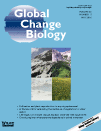|
Alumni Publications
 Acevedo, A. A., Franco, R. & Carrero, D. A. (2016) Diversity of Andean amphibians of the Tamá National Natural Park in Colombia: a survey for the presence of Batrachochytrium dendrobatidis. Animal Biodiversity and Conservation 39(1): 1–10. Acevedo, A. A., Franco, R. & Carrero, D. A. (2016) Diversity of Andean amphibians of the Tamá National Natural Park in Colombia: a survey for the presence of Batrachochytrium dendrobatidis. Animal Biodiversity and Conservation 39(1): 1–10.
Diversity of Andean amphibians of the Tamá National Natural Park in Colombia: a survey for the presence of Batrachochytrium dendrobatidis. Changes in diversity and possible decreases in populations of amphibians have not yet been determined in many areas in the Andes. This study aimed to develop an inventory of the biodiversity of amphibians in the Andean areas of the Tamá National Natural Park (Tamá NNP) and to evaluate the patterns of infection by Batrachochytrium dendrobatidis (Bd) in preserved and degraded areas. We performed samplings focused on three habitats (forest, open areas and streams) in four localities from 2,000 to 3,200 m in altitude. Fourteen species were recorded, 12 of which were positive for Bd. A total of 541 individuals were diagnosed and 100 were positive. Our analyses showed that preserved areas play an important role in keeping many individuals Bd–free as compared to those in degraded areas. This was the first study to evaluate diversity and infection by Bd in the northeast region of Colombia. Our findings may help improve our knowledge of the diversity of amphibian species in the area and facilitate the implementation of action plans to mitigate the causes associated with the decrease in amphibian populations.
 Cureg, M.C., Bagunu, A. M., van Weerd, M., Balbas, M.G., Soler, D. and van der Ploeg, J. (2016) A longitudinal evaluation of the Communication, Education and Public Awareness (CEPA) campaign for the Philippine crocodile Crocodylus mindorensis in northern Luzon, Philippines. International Zoo Yearbook. doi: 10.1111/izy.12112 Cureg, M.C., Bagunu, A. M., van Weerd, M., Balbas, M.G., Soler, D. and van der Ploeg, J. (2016) A longitudinal evaluation of the Communication, Education and Public Awareness (CEPA) campaign for the Philippine crocodile Crocodylus mindorensis in northern Luzon, Philippines. International Zoo Yearbook. doi: 10.1111/izy.12112
The Philippine crocodile Crocodylus mindorensis is Critically Endangered and its range is restricted to a few localities in human-dominated landscapes. Therefore, the survival of this species in the wild depends strongly on the support of local people. Communication and education are prerequisites for successful in situ conservation. Over a 12 year period, the Mabuwaya Foundation distributed posters, calendars and comic books, organized theatre shows, gave school lectures, facilitated community meetings and established a crocodile rearing station/visitor centre to mobilize local support for the conservation of the Philippine crocodile in the northern Sierra Madre in Luzon. This paper documents changes in people's awareness of and attitudes towards the conservation of the Philippine crocodile, and changes in people's behaviour in ten barangays (villages) in the municipality of San Mariano. Most people living in crocodile habitat now know that the Philippine crocodile is protected by law and support the conservation of the species in the wild. Hunting, the destruction of nests and the use of destructive fishing methods have all significantly declined in these areas. As a result of the integrated conservation programme, the Philippine crocodile population is slowly recovering.
 Ferrari, R., Bryson, M., Bridge, T., Hustache, J., Williams, S. B., Byrne, M. and Figueira, W. (2016) Quantifying the response of structural complexity and community composition to environmental change in marine communities. Global Change Biology 22:1965–1975. doi:10.1111/gcb.13197 Ferrari, R., Bryson, M., Bridge, T., Hustache, J., Williams, S. B., Byrne, M. and Figueira, W. (2016) Quantifying the response of structural complexity and community composition to environmental change in marine communities. Global Change Biology 22:1965–1975. doi:10.1111/gcb.13197
Habitat structural complexity is a key factor shaping marine communities. However, accurate methods for quantifying structural complexity underwater are currently lacking. Loss of structural complexity is linked to ecosystem declines in biodiversity and resilience. We developed new methods using underwater stereo-imagery spanning 4 years (2010–2013) to reconstruct 3D models of coral reef areas and quantified both structural complexity at two spatial resolutions (2.5 and 25 cm) and benthic community composition to characterize changes after an unprecedented thermal anomaly on the west coast of Australia in 2011. Structural complexity increased at both resolutions in quadrats (4 m2) that bleached, but not those that did not bleach. Changes in complexity were driven by species-specific responses to warming, highlighting the importance of identifying small-scale dynamics to disentangle ecological responses to disturbance. We demonstrate an effective, repeatable method for quantifying the relationship among community composition, structural complexity and ocean warming, improving predictions of the response of marine ecosystems to environmental change.
See all alumni publications
|